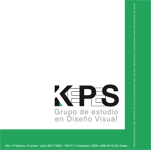Authors
Abstract
The article presents the characterization of journalistic political caricature as a genre of opinion in San Juan de Pasto from the second half of the twentieth century until 2013 since this type of studies are unknown in the region. Therefore, the text seeks to highlight some historical facts besides revealing their contents from the discursive and visual elements considered as a weapon of struggle and resistance that allowed understanding the social reality from the political caricature, being the image an expressive means that evidences the most critical social problems that occurred at the national level with direct repercussion at the local level. This way, the research was developed from the qualitative paradigm to the extent that categories of political caricature in Pasto were established: characters, situations and society. Therefore, the investigation sought the origin of caricature from the Historical hermeneutical method turning to the documentary sources of newspapers and magazines by means of photographic record, as well as the inter subjective strategy of direct observation in the testimonial oral comparison about the conceptual and technical management of the representation of caricature artists. In addition, first it was necessary to establish the precedents of caricature in Pasto, and then to analyze the relationship of political caricature with power and journalism, as well as to find the convergence between social facts and political contents. In the third place, it was necessary to highlight the contents of political caricature as visual expression, as generator of critical citizen thinking and as a complaint mechanism through the expressive features made by the “pastuso” caricature artists. Finally, it was necessary to articulate a method from the discursive semiotic analysis that reveals the symbolic and rhetorical contents of the image.
Keywords
References
Arias, C. (2016). La caricatura política en el periódico tierra, análisis gráfico (1932 – 1938). Memorias Seminario de investigación en diseño. Universidad Pedagógica y Tecnológica: Duitama. p 410.
Barney, E. (1983). Historia del Arte en Colombiano. Tomo 9. Bogotá: Salvat.
Baudelaire, C. (1998). Lo cómico y la caricatura. Madrid, España. Visor. p. 18.
Constain, M. & Rouvinski, V. (2012). Colombia Internacional 76. Las relaciones internacionales en tiempos de crisis. El espectáculo político del acuerdo humanitario y la mediación de Hugo Chávez en el segundo mandato de Álvaro Uribe. Bogotá, Universidad de los Andes. p. 238.
De la Rosa. (1913). Traca Traca. Portada.1A. Pasto. P1.
Gamonal, R. David Carson contra Aristóteles: análisis retórico del diseño gráfico. En: razonypalabra. (en línea). No. 37. (2004). (Consultado el septiembre 5 de 2013). Disponible en http://www.razonypalabra.org.mx/anteriores/n37/rgamonal.html.
González, B. (2010). La caricatura en Colombia a partir de la independencia. Bogotá : Banco de la República. p. 17
Gömbrich, E.H. (2011). Los usos de las imágenes. Estudio sobre la función social del arte y la comunicación visual. Singapur: Phaidon. p. 304.
Gömbrich, E.H. (1979). Arte e ilusión. S.A. Barcelona: Gustavo Gilli. p. 293.
Hurtado & De la Rosa. (1911). EL ALFILER. Portada. Tanda 1. Número 1. Pasto. p. 1 1A).
Martínez. (1943). El Arlequin.1A. Pasto. p.1.
Megss, P. & Purvis, A. (2009). Historia del diseño gráfico. Cuarta edición. México. RM Verlag. p. 560.
Naranjo, V. (2006). Teoría Constitucional e instituciones políticas. 10ª ed. Bogotá: Temis, p. 93.
Pérez, S. (1998). Manual Historia de Pasto. Imprenta y periodismo en Pasto durante el siglo XIX. Pasto: Academia Nariñense de Historia, p. 67.
Rueda, C. Entrevista. (2011). Banco de la República. San Juan de Pasto.
Santa, E. (1974). El Papel Periódico Ilustrado. Cali: Carvajal.
Sánchez, G. La caricatura política: sus funcionamientos retóricos. En:razonypalabra. (en línea). No. 78. (2011). (Consultado el octubre 10 de 2013). Disponible en http://www.razonypalabra.org.mx/varia/N78/2a%20parte/28_Sanchez_V78.pdf
Villareal, D. (1946). Fray Trabuco. Pasto. p. 1. c. 1.
Vargas, J. (2013). Entre trazos e ironías: el gobierno de Álvaro Uribe en la caricatura política de Vladdo. Cali. Universidad del Valle. p. 78.

 pdf (Español (España))
pdf (Español (España))
 FLIP
FLIP





















